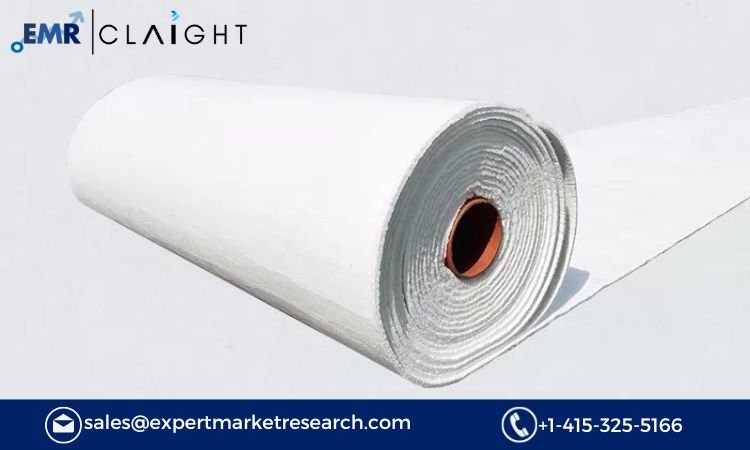
The global Aerogel Insulation Market has experienced substantial growth in recent years, driven by technological advancements and the rising demand for high-performance insulation materials. Aerogel, known for its excellent thermal properties, lightweight nature, and low environmental impact, is being increasingly adopted across various industries such as construction, oil & gas, automotive, and aerospace. The aerogel insulation market, supported by the broader aerogel industry, reached a value of USD 858.50 million in 2023 and is projected to grow at a robust CAGR of 10% between 2024 and 2032. This article delves deep into the aerogel insulation market’s key benefits, industry developments, driving and restraining factors, market segmentation, trends, and challenges.
Key Benefits of Aerogel Insulation
- Superior Thermal Insulation: Aerogel is widely known for its unmatched thermal insulation properties. It provides excellent resistance to heat flow, making it one of the most effective materials for insulation, particularly in applications where minimizing heat loss or gain is critical.
- Lightweight and Durable: Despite its high insulation capacity, aerogel is an extremely lightweight material, often described as “frozen smoke.” This makes it ideal for industries like aerospace, where weight reduction is crucial. It is also durable and resistant to moisture, making it a long-lasting solution for insulation needs.
- Environmentally Friendly: Aerogel is a non-toxic, recyclable material, which makes it a sustainable choice for green building initiatives. Its ability to enhance energy efficiency in buildings further contributes to reducing the carbon footprint.
- Versatility: Aerogel insulation can be used in various forms such as blankets, panels, and boards, catering to different industrial applications. Its versatility makes it suitable for complex projects across industries like oil & gas, construction, and automotive.
Key Industry Developments
- Expansion in the Construction Sector: With the increasing focus on energy efficiency and sustainability in construction, aerogel insulation has gained traction as an advanced solution for reducing energy consumption in buildings.
- Rising Demand in Oil & Gas Industry: The oil & gas sector is a major consumer of aerogel insulation, particularly for pipeline insulation. Key industry players are investing in aerogel technology to enhance insulation performance in extreme conditions, boosting the overall market growth.
- Advancements in Manufacturing Technologies: Recent innovations in the production of aerogel materials have led to cost reductions and improved product performance. For instance, companies are working on reducing the thickness of aerogel insulation without compromising its thermal efficiency.
- Collaborations and Partnerships: Leading companies in the aerogel insulation market are collaborating with energy and construction firms to develop customized insulation solutions, further expanding the scope of aerogel usage in new applications.
Driving Factors
- Growing Focus on Energy Efficiency: Governments and regulatory bodies worldwide are encouraging the adoption of energy-efficient building materials to reduce energy consumption and greenhouse gas emissions. Aerogel insulation is seen as a key material for achieving these goals.
- Increasing Industrial Applications: The versatility of aerogel insulation is driving its adoption across various industries, including construction, automotive, oil & gas, and aerospace. In particular, the oil & gas sector’s need for high-performance insulation in pipelines and refineries has boosted market growth.
- Rising Urbanization and Infrastructure Development: Rapid urbanization and the growing demand for modern infrastructure are leading to increased investments in the construction of energy-efficient buildings, propelling the demand for aerogel insulation.
Restraining Factors
- High Production Costs: Despite its superior properties, aerogel insulation remains more expensive than traditional insulation materials. The high cost of raw materials and the complex manufacturing process are major barriers to widespread adoption, particularly in price-sensitive markets.
- Lack of Awareness: While aerogel insulation offers significant advantages, many potential end-users are not fully aware of its benefits or how it can be applied to their specific industries. This lack of awareness, especially in developing regions, poses a challenge to market expansion.
- Fragility and Handling Issues: Aerogel is known for being brittle, which makes it more prone to damage during transportation and installation. This fragility adds to the cost and complexity of handling, which may discourage its use in certain applications.
Market Segmentation
By Type:
- Blankets: Aerogel blankets are one of the most commonly used forms of insulation, providing flexible yet effective thermal insulation in various applications.
- Panels: Aerogel panels are used in construction and automotive applications where lightweight and high-performance insulation is required.
- Particles: These are used in specific niche applications, such as additives in paints or coatings to enhance insulation properties.
By Application:
- Building & Construction: Aerogel insulation is increasingly used in green building projects due to its ability to enhance energy efficiency.
- Oil & Gas: The demand for aerogel insulation in this sector is driven by its ability to perform well under extreme temperatures, particularly in pipeline insulation.
- Automotive & Aerospace: Lightweight and thermally efficient aerogel materials are gaining popularity in the automotive and aerospace industries for insulation purposes.
By Region:
- North America: The largest market for aerogel insulation, driven by stringent energy efficiency regulations and significant demand from the oil & gas industry.
- Europe: The European market is expanding due to the region’s focus on sustainable building materials and energy conservation.
- Asia-Pacific: Rapid urbanization and industrialization in countries like China and India are creating new opportunities for aerogel insulation in infrastructure development.
Market Outlook
The global aerogel insulation market is poised for significant growth over the forecast period of 2024 to 2032. Increasing adoption across industries, particularly in construction and oil & gas, along with advancements in aerogel production, is expected to propel the market. With the growing emphasis on sustainability and energy efficiency, aerogel insulation is likely to become an integral part of future building and industrial projects.
Trends in the Industry
- Development of Thinner Aerogels: Researchers and manufacturers are focusing on developing thinner yet highly efficient aerogels, which will help reduce overall material costs while maintaining high thermal performance.
- Increased Focus on Sustainability: As sustainability becomes a major focus across industries, aerogel insulation, with its recyclable and non-toxic properties, is gaining momentum as a key material in green construction projects.
- Expansion in Aerospace Applications: The lightweight properties of aerogel make it an ideal material for aerospace applications, where reducing weight without compromising performance is essential.
Regional Analysis/Insights
- North America: The demand for aerogel insulation in North America is largely driven by its widespread application in the oil & gas sector and stringent building regulations that emphasize energy efficiency.
- Europe: Europe is a significant market for aerogel insulation due to its focus on sustainability and the adoption of high-performance insulation materials in green building projects.
- Asia-Pacific: The Asia-Pacific region is expected to witness the fastest growth, supported by rapid urbanization and infrastructure development in emerging economies such as China and India.
Top Impacting Factors
- Government regulations promoting energy-efficient building materials
- Growing industrial applications of aerogel insulation
- Technological advancements reducing the cost of aerogel production
Target Audience
- Construction and building material manufacturers
- Oil & gas companies
- Automotive and aerospace industries
- Research and development institutes focusing on insulation technologies
Major Key Players in the Aerogel Insulation Market
- BASF SE
- Aerogel Technologies, LLC
- Aspen Aerogels, Inc.
- Cabot Corporation
- Others
Opportunities
- Expanding adoption of aerogel insulation in residential and commercial building projects
- Growing demand from emerging economies with increasing construction and infrastructure investments
Challenges
- High initial cost compared to traditional insulation materials
- Handling issues due to the fragile nature of aerogel products

